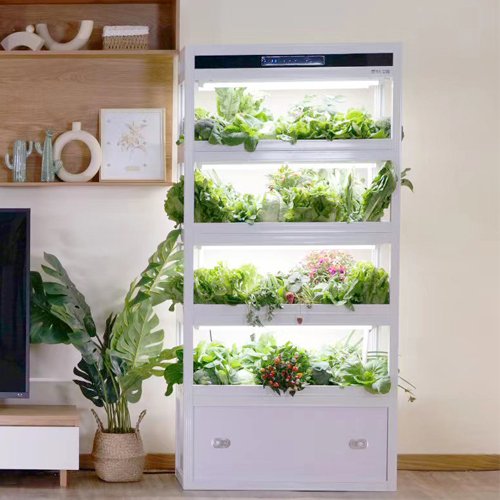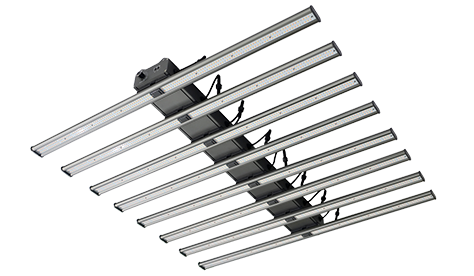Snění o šťavnatých rajčkách praskajících s chutí, bylinkami tančící na slunci a osobní oáza přetékající domácí dobrotou.
Budování vašeho hydroponického systému není jen pro ostřílené kutilské mavericks. Ve skutečnosti, s trochou vedení a správným přístupem, mohou dokonce i začátečník botanisté kultivovat svůj hydroponický ráj.
Navigujeme dva nejvíce pro začátečníky hydroponické systémy- Kultura hluboké vody (DWC) a systém odlivu a toku.
Než začneme: Výběr systému
Pojďme prozkoumat dva systémy, které budeme stavět:
Kultura hluboké vody (DWC): In DWC, kořeny rostlin visí v roztoku bohatém na živiny, neustále se koupe v kyslíku díky vzduchovému čerpadlu. Jednoduché nastavení a údržbu, DWC je ideální pro listové zelené a bylinky.
Systém odlivu a toku: Tento systém pravidelně zaplavuje a vypouští pěstovací postel a napodobuje přirozený vzestup a pokles přílivu. To okysličuje kořeny a zabraňuje hromadění živin, což je vhodné pro širší škálu rostlin, včetně ovoce a zeleniny.
Budování systému DWC
Systém DWC je populární a uživatelsky přívětivý hydroponický systém. Kořeny rostlin jsou ponořeny do okysličené vody, což jim umožňuje přijímat dostatečnou vodu, živiny a kyslík. Tento systém vyžaduje vzduchové čerpadlo a vzduchový kámen, aby udržoval hladinu kyslíku ve vodě.
Materiály:
Vzdušný kámen
Vzduchové čerpadlo
Síť může
Nádrž (jako je tote nebo kbelík)
Živný roztok (hydroponický vzorec)
Knife pro řezání pěnové plastové platformy
Polystyrenová pěna pro použití jako vor
Pěstování média (Rockwool, Clay Pebbles)
Časovač (volitelné)
Kroky:
1. Připravte si nádrž: Vrťte otvory ve víku pro vzduchový kámen a čistý hrnec. Zajistěte, aby hladina vody neponořila stonky.
2. Vstupní výživové roztoky do nádrže: Smíchejte koncentrát podle pokynů výrobce a vyplňte do hloubky 30 centimetrů nebo hlouběji.
3. Vložte vzduchový kámen a síťový hrnec: Ponořte vzduchový kámen do vody a zajistěte síťový hrnec do otvorů víka.
4. Vyřízněte polystyrenovou pěnu a vytvořte plovoucí vor a umístíte jej asi 3 centimetry pod horní část kontejneru nebo nádrže. Vyřízněte otvory v pěně s dostatečným roztečem.
5. Vstupní pěstování média do síťového hrnce: Jemně vložte kořeny rostlin do rostoucího média a udržujte stonky nad vodovodnou linií.
6. Umístěte rostlinu do čistého hrnce a poté vložte síťový hrnec do otvorů do plastové plošiny pěny. Síťový hrnec umožňuje kořenům rostlin růst z dna a stran, což jim usnadňuje přístup k živinám a kyslíku.
7. Připojte vzduchové čerpadlo a časovač (volitelné): Časovač umožňuje automatické cykly dodávání živin.
Budování systému odlivu a toku
Systém odlivu a toku je technický a složitější, ale také nabízí větší všestrannost. Jeho funkčnost zahrnuje periodický příliv vody a odtok z nádrže na základě potřeb rostliny, růstového cyklu a dokonce i teploty.
Během procesu přítoku protéká okysličená voda a dodává rostlinám vodu a živiny. Když se odtočí, roztok živin ve vodě se vrací do nádrže pro opětovné použití, což vyžaduje, aby čerpadlo ponořilo a vypustila růstový zásobník.
Materiály:
Kontejner nádrže (tote, kbelík)
Výsadba (plastová nádoba,
PVC potrubí)
Siphon Bell a Riser
Čerpadlo a časovač
Pěstování média (hlíny, Perlite)
Čisté hrnce a víka
Kroky:
1. Vytvořte výsadbu: Vrťte otvory na dně nádoby pro drenáž. Pokud používáte trubky PVC, připojte je s lokty a odpaliště a vytvořte mřížku.
2. Namontujte sifonový zvon a stoupač: Umístěte sifonový zvon na dno nádrže a stoupačka se rozprostírá nad hladinou vody vložku.
3. Připojte čerpadlo a časovač: Čerpadlo tlačí roztok živin do stoupačky a ponoří výsadbu. Časovač řídí cyklus povodní a vypouštění.
4. Naplňte výsadbu rostoucími středními a čistými květináče: Po krocích pro nastavení systému DWC položte čisté květináče na rostoucí médium.
Udržování vašeho hydroponického systému
Monitorujte hladinu živin a pH: Pravidelně otestujte své řešení a upravte jej tak, aby udržoval optimální růst rostlin.
Udržujte systém čistý: Pravidelně vyměňte roztok živin a otřete zařízení, abyste zabránili růstu řas.
Prořezávejte své rostliny: Pravidelné prořezávání podporuje zdravý růst a zabraňuje přeplnění.
Nákup vs. budování
Abych byl upřímný, ne každý je kutilským nadšencem. Při vytváření vašeho hydroponického systému může být obohacující zážitek, což přináší pocit úspěchu a personalizace, vyžaduje také čas, technické dovednosti a dostatečnou trpělivost k řešení problémů.
Pro mnoho nadšenců ekologičtějšího bydlení může tlak na elektrické nářadí a trubky PVC rychle vést k uschnutí snů o domácí čerstvé produkty. Proč si nekoupit stávající hydroponický systém místo toho, aby prošel nákupem a konstrukcí materiálu?
Všechno, co potřebujete, přichází úhledně zabaleno, označeno a s jasnými pokyny, což je pochopitelné i pro někoho, kdo poprvé vychovává rostliny. Není třeba dešifrovat kryptická schémata nebo hádat každé spojení.
Rozloučte se s frustracemi z projektů pro kutily a netěsné spojení. Místo toho si můžete užít ostré salátové zelené nebo šťavnaté cherry rajčata v žádném okamžiku.
Hydroponické systémy Auxgrow jsou obvykle navrženy s ohledem na modularitu. Jak roste váš zelený palec, můžete přidat další výsadbu, další kultivační skříň nebo vyměnit komponenty.
Od přístavních přístřešků na plochu až po vertikální zeleninovou krajinu poskytujeme řešení pro různé prostory a rozmanité potřeby. Pokud máte zájem o naše hydroponické systémy, kontaktujte nás pro nejpodrobnější informace.



Bonusové tipy
Začněte malý s jednou nebo dvěma rostlinami, abyste získali zkušenosti před rozšířením hydroponického systému.
Zkoumejte specifické potřeby rostlin, které se rozhodnete růst.
Připojte se k online hydroponickým komunitám pro podporu a radu.
Jayes
Jako digitální marketingový manažer ve společnosti AUXGROW spojuje Jayes vášeň pro hydroponické systémy a odborné znalosti v oblasti LED pěstebních světel. Díky praktickým zkušenostem a hlubokému porozumění vás Jayes provede světem udržitelného pěstování.






